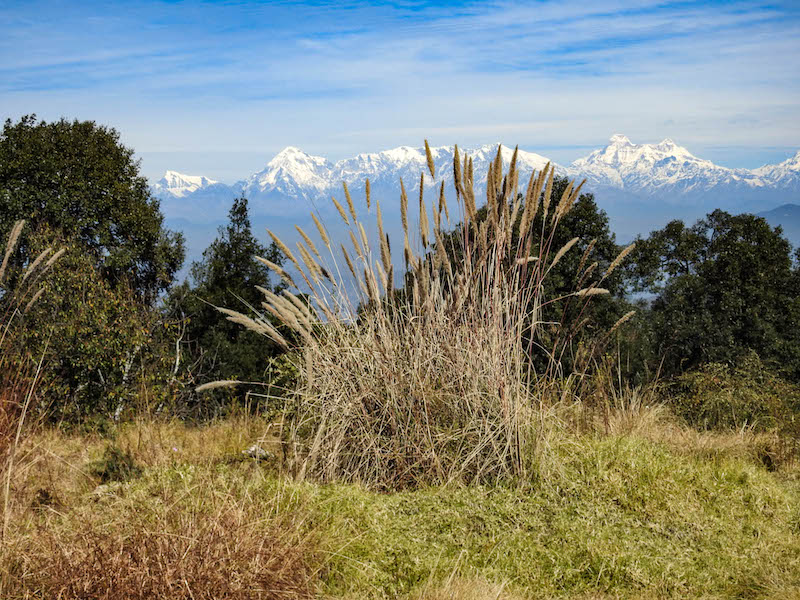With a Bachelor’s degree in Agriculture and Masters in Forestry from Forest Research Institute Dehra Dun, Ajay Kumar is an environmentalist with a passion for combating climate change and promoting sustainable practices.
Climate change is posing unprecedented difficulties for the fragile environment of the Himalaya. The Himalaya are a breath-taking natural wonder of significant ecological importance. The Himalaya span the five nations of Bhutan, China, India, Nepal, and Pakistan; and also extend to Afghanistan and Myanmar. They feature a variety of landscapes, and are the source of freshwater for millions of people and are home to a broad range of cultures. How has the Himalayan region been affected by climate change? There is a critical need for sustainable practices to save Himalaya – a priceless natural resource, that is key to our survival.

Threats
Changing Glacial Patterns: The fast retreat of glaciers in the Himalaya is one of the most obvious effects of climate change. Major rivers like the Ganga, Indus, and Brahmaputra receive freshwater from glaciers, which are an important supply of this critical resource. In addition to reducing the amount of water available downstream, the rapid melting of glaciers increases the possibility of glacial lake outburst floods (GLOFs). Communities residing in the area may suffer terrible repercussions as a result of these abrupt floods.
Irregular Weather Patterns: The Himalaya are experiencing an increase in irregular weather due to climate change. Extreme weather occurrences like torrential downpours, landslides, and avalanches have increased in frequency. For the local communities, who depend on consistent weather for agriculture and their means of subsistence, this poses substantial problems. The region’s food insecurity is made worse by the unpredictability of weather patterns, which interferes with farming cycles.
Threats to Biodiversity: The Himalaya, one of India’s four biodiversity hotspots, is recognised for its rich biodiversity and is home to many endemic species that are unique to the region. However, these ecosystems are being disturbed by warming temperatures and shifting precipitation patterns. This is creating new adaptation patterns, species are changing their distribution and, in some circumstances, becoming endangered or going extinct. Not only are we morally obliged to prevent this extinction of species, largely exaggerated by anthropogenic activities, but the natural equilibrium of the Himalayan region depends on protecting the region’s unique flora and fauna.
Water Scarcity: The Himalayan Rivers are the country’s lifeblood, providing water for domestic, industrial, and agricultural use. The timing and amount of river flows are becoming more unpredictable as temperatures rise. This has an impact on both the availability of water and the production of hydroelectric power, which is a source of energy for several nations in the region. This hydro-electric power itself needs to be reconsidered. How much energy should optimally be generated? Sustainable water management is a critical issue because the lack of water can cause disputes between countries, between governments and people downstream even before it becomes an issue of survival.
Solutions
1. Mitigation: Slowing the rate of climate change by reducing greenhouse gas emissions globally and trapping the greenhouse gas like CO2 by planting more trees and generating and preserving forests which serve as a carbon sink.
2. Adaptation: Creating plans for helping Himalayan people adjust to the changing climate, such as better water management, robust farming methods and preparedness for disasters.
3. Conservation: Enforcing laws governing wildlife conservation and creating protected zones to safeguard the delicate ecosystems of the Himalayas and protecting the habitat which is the major reason for the loss of biodiversity.
4. International Cooperation: Encouraging collaboration across Himalayan nations to tackle problems like water management and catastrophe response.
5. Community Engagement: Including local groups in decision-making procedures and giving them the tools they need to combat and adapt to climate change. As it is well known that the communities living in any fragile ecosystem can contribute and be the major role player towards its conservation.
6. Increasing awareness: Educating people about Climate Change, sustainable practices and knowledge-sharing, critical for coping with the crises that will have to be faced.
The Himalayas are a global asset as well as a local issue. In this crucial area, combating climate change is necessary to protect not only the natural beauty of the area but also the wellbeing of the millions of people who depend on its resources. To ensure a sustainable future for the Himalayan region and the Earth as a whole, is a duty that must be shared by all stakeholders. The sooner this dialogue becomes a household reality, the better our chances of being able to work together at finding solutions, co-operating towards a shared reality we will have to face together.